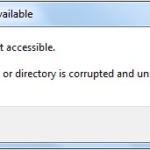7 Steps to Create a Successful Online Course
Today, if you have experience in almost any subject matter, you can easily turn your knowledge into a lucrative stream of income by creating an online course for others to take. Online courses are available for a wide range of subjects, and this includes everything from art instruction, to programming languages, and even farming. In fact, with enough effort, you can make a six or even seven-figure income through the creation of online courses.
The educational training and technology industry is booming. Experts estimate that this is already a $100 billion dollar market. Now is the time to take advantage of this growth by creating your own course.
I’ve seen thousands of people create online courses and talked directly to hundreds of them who have built successful businesses in a few months.
In this post, I will walk you through the crucial steps each of these entrepreneurs followed to teach online courses for a profit.
Reasons for Creating an Online Course
If you are not sure that the option to teach online courses is a business model you would want to pursue, you should consider a few of the many reasons why people create them:
- Online courses can provide you with a steady stream of part-time or full-time income, depending how much time and effort you put into monetizing the project. The unit economics of digital information products is perfect for the instructor: any additional sale generates virtually zero incremental cost.
- When you create an online course, you are taking advantage of your expert knowledge on a subject to add value to other people’s lives. It could be on a topic in your career field, a hobby that you are interested in, or even something you want to get better at. You can think of it as turning your most valuable asset, your knowledge, into a marketable product.
- Finally, your course has the potential to provide a higher return on investment to its users as compared to other available options. While the cost of higher-level and specialized education is on the rise, you can offer customers a highly competitive price point.
Step 1: Define your course idea
Deciding on a topic for your course may be the most challenging aspect of this process. You should spend ample time brainstorming different subjects that you can talk about that others would find useful and meaningful. It is most helpful to give potential students actionable content in a how to format rather than simply just explain what something is.
The most monetizable topics will add value to your students and give them a transformation of some kind that can improve their lives.
Most inexperienced course creators make the mistake of trying to pursue the largest market opportunities. However, the easiest way to get started with a profitable course idea is to find an underserved niche market.
Many free tools allow you to find attractive niche markets. We suggest that you get started looking at search volumes using the Google AdWords Keyword Planner, and size of audiences and interests using the Facebook Ads Manager (you won’t have to pay a dime to do research using these tools.)
Don’t worry if you have too many ideas! Just pick one and get started. You can always come back later to create courses on the other topics you have brainstormed, so keep your list stored in a safe place.
Step 2: Set clear goals
When you teach online courses, you are usually in control over how much you charge for your students to view your class material. Therefore, determine how much money you would like to make from the class, and estimate how many new students you could potentially capture by marketing your product to the audience you’ve identified. You can then work backward to the amount of money you should charge for the course.
Step 3: Create your email list
Growing your email list is arguably the most important step to take if you want your course to be profitable.
The best way to build an email list with an interested target audience is to give something of value away for free. This ideally will be a teaser product that introduces or sells your course in some way.
For example, you could give away a free e-book that you created, a membership to your website or blog, podcasts and more. Create content that delves into the material that the course will offer, but leave plenty of value in the product that the consumer will be paying for.
Step 4: Set the price of your course
Many people struggle to set a realistic price for their course. For example, some people think that they can learn anything they needed to on any topic for free by using the Internet. However, it may take them months or even years as well as plenty of trial and error to get to your current level of knowledge on the topic.
The most valuable thing your course offers to its students is a shortcut to an outcome. The reality is that many people are willing to pay for a faster and easier way to learn more about a topic. There is value in your ability to condense the information that you have learned as well as in your capacity to provide all of the content to your students in a user-friendly manner.
However, most new course creators make the mistake of setting the price of their product too low. What you should bear in mind is that consumers associate low prices with lower quality. We’ve found that by selling your course for at premium price point, your students will view the material as being more useful or beneficial simply because they paid more for it.
Step 5: Set the foundation for your business
If you are preparing to create and launch a course, it is most helpful if you create your own online sales platform and school. There are plenty of online marketplaces that allow you to submit a course and to take advantage of their current marketing and student mailing lists. However, these marketplaces usually limit your ability to control prices, take a portion of profits from you, and don’t give you full access to your students’ contact information.
If you want to build an online business for the long term, you should consider using a platform that will allow you to build your own online school and have complete control of every aspect of the business.
Step 6: Create useful, valuable, and friendly course content
your next step is to turn your knowledge into an engaging online course. It is helpful to create an outline as a first step, and this outline should detail each step that your students should follow to achieve the transformation that your product advertises.
Many of the most successful courses feature both text and video. They also may have ample graphics or images that add value to the students.
Fortunately, it is no longer expensive to create professional-level content. Your phone or laptop camera can help you record high-quality video lectures, you can use free tools like Google Slides to design beautiful presentations, and you can even hire skilled professionals from all around the world who will help you do this for a very low price.
Step 7: Present your course to the market (launch it!)
Depending on how you approach this, it can take a substantial amount of planning and effort to get to the point where you are ready to launch your course, but we recommend investing an equal amount of effort in designing and executing a launch strategy.
After analyzing hundreds of businesses go to market, we’ve distilled a basic framework that can be adapted to launch online courses most industries. It’s a sequence of emails that is meant to educate, provide value, and sell your product to your audience:
– Day 1: Tease your audience about what’s to come
– Day 2: Share a personal story and how that led you to create the course. Explain what is in the course
– Day 3: Announce that the course is now open for enrollment
– Day 4: Answer the most frequently asked questions in public (some people might have doubts about your product but just don’t take the time to ask the necessary questions)
– Day 5: Offer a surprise bonus for those that buy immediately
– Day 6: Say “thank you” and show social proof
– Day 7: Make a logical argument to buy now and say your course is closing or that the launch pricing is ending soon
– Day 8: Send three emails reminding people about the end of the launch
Are you ready to get started?
As we mentioned, these seven steps will serve as a framework to go from zero to the launch of an online course business. Of course, you may choose to perform them in a different order, and some suggestions may not apply to your industry. However, I recommend that you don’t skip any of these as each of them will build upon the next and accrue towards ultimately generating better results.
Hope I can get to see your course!
About the Author:
Eduardo Yi is the lead content marketer at Teachable, a platform that allows everyone, from creative individuals to established organizations, to easily teach online and create profitable businesses.
















